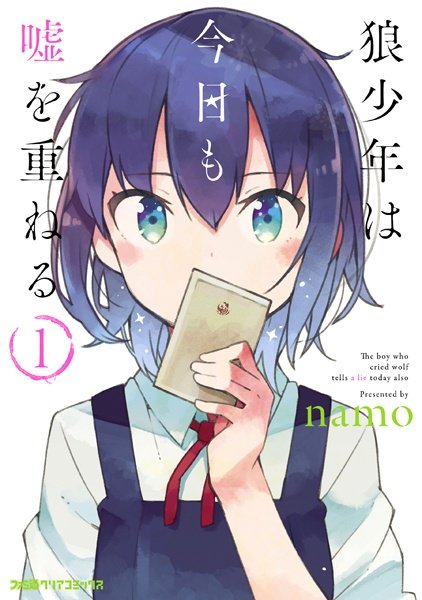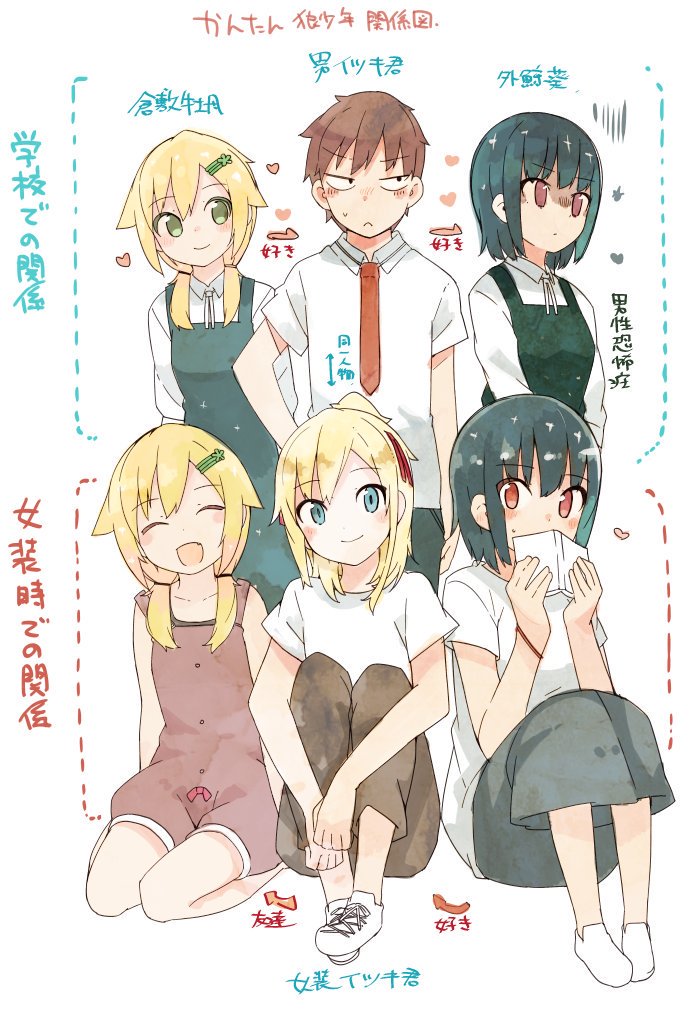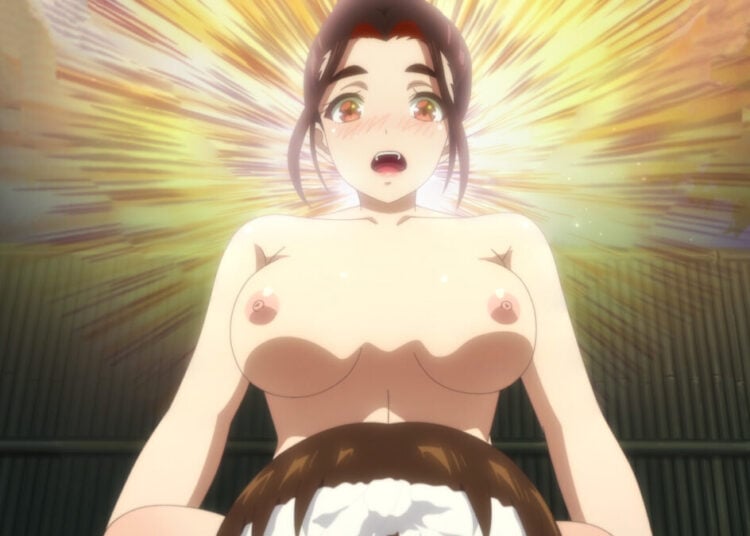As far as completed romantic comedy series go, Ookami Shounen wa Kyou mo Uso wo Kasaneru (which will be shortened to Ookami Shounen for the rest of this article) tops the list for me as an all time favorite. A relatively low key series, Ookami Shounen stands out from the large crop of other romantic comedy series by targeting and successfully exploring mature themes related to identity, fear, and self improvement.
A quick synopsis of the series: Keitarou Itsuki is a junior high school student with a menacing look in his eyes, one that scares away his peers. After a failed confession to the girl he likes, Aoi Tokujira, she catches him crossdressing. Aoi Tsukijira, with an intense fear of men, takes a liking to the cross-dressing Keitarou, and asks him to help her overcome her fears.

The manga manages to hit all the notes of a successful romantic series, while diving into mature themes and exploring them through the characters, without detracting from the tone of the series. The focus on strong character relationships and the way they handle the situations that they create themselves serves to highlight their own personalities. It’s very much a character driven story — nearly all the conflicts and drama are self-inflicted. In this review, I’d like to focus on the strengths of the series, mainly the light-hearted tone, the themes that it touches on, along with the relationship between the characters.
Naturally, there will be spoilers, but they’ll be minor!
Tone
As a romantic comedy series, Ookami Shounen has a bubbly personality to it, which is reflected in the art itself. The tone is set by the interactions of the main characters and the rest of the cast, all playing off of each other to set a humorous tone that sticks with the series until the end.
Ookami Shounen doesn’t shy away from tone shifts when appropriate, however. There are several scenes throughout the story where it becomes somber, chaotic, or uncomfortable. None of the shifts feel forced, and fits into the narrative naturally. The characters are constantly playing off each other, joking and having fun. They also get mad, jealous, angry, and sad. It’s a series with a whirlwind of emotions so fast that I often got swept away with the mood. The constant tone shifts accurately represent the feeling of going through puberty, and it’s exciting as a reader to follow. I don’t often like to reminiscence back to my dark days in high school, but reading Ookami Shounen often felt very relatable.
A fair comparison would be to the famous Nisekoi series, where the tone is consistent throughout (well, up until the ending, but that’s for another article), but knows when to kick it up a notch to emphasize the dilemmas of the characters. Nisekoi fully realizes the fleeting moments of young love, and all the chaos that comes with it. Ookami Shounen, much like Nisekoi, takes readers on a volatile roller coaster of high ups, and low lows. Masterful in its approach, Ookami Shounen is constantly drawing attention to itself by playing off its tone and how it encompasses the narrative as a whole to deliver a wholesome, youthful story.

Themes
Ookami Shounen is mature for its genre. Whereas most romantic comedies may use gender identity as a one-time or running gag, it is the core premise of what makes Ookami Shounen special. The story explores how the main character overcomes his rejection from his crush, but as a cross-dressing female instead of a male. At first glance, it may seem like a gag to set up an interesting premise, but what Ookami Shounen excels in is taking that premise and exploring the impacts on what the main character’s actions have on himself and others.
Gender identity is usually a topic of ridicule in Japan. As an example, the recent remaster of Yakuza 3 cut out a transphobic sidequest line of the game, citing the changing times and moral values. Ookami Shounen bravely tackles gender not only through the lens of the main character, but also through the various side characters in the series. Crossdressing plays the major role in the series, but it’s never treated as a gag. The cross-dressing helps the characters explore the acceptance of who they are and who they want to become. Ookami Shounen strides towards its own premise with confidence, never failing to avoid the typical cliches and gags that come with crossdressing.

Trailing along with the theme of gender identity is the exploration of sexual identity. One of the main heroines, Aoi Tokujira, spends the majority of the series figuring herself out. Her attraction to gender is a main striking point Ookami Shounen hits, but takes the development of Tokujira’s self awareness in stride, never jumping to conclusions, or leaving it on hold. The series handles Tokujira’s sexual identity with great care, not once using it as a joke for a quick chuckle.
The reason why I bring up gender and sexual identity for Ookami Shounen is because the anime and manga community tends to use these themes as gags and entertainment. With the rising popularity of trap characters in the otaku community, it seemingly embraces transgender identities, but mostly at a shallow level. There are few works that explore the psychology of how characters deal internally and externally with these struggles, and Ookami Shounen stands out from the rest in how it deals with these themes, and how it resolves them.
Characters
A story is only as good as its characters, or so I believe. I personally enjoy stories that focus on character-driven narratives the most, so Ookami Shounen hooked me from the start.
Rarely does a group of high school students come across as genuine and lovable. Thinking back to my days in high school, I can’t say I was exactly a model citizen (nor were my peers), but it was a time of youth. The charm of the cast is being a part of the youth that they experience, where they discover themselves. It’s very much a coming of age story, with a strong focus on the internal turmoil that comes with puberty and falling in love.
As Keitarou, the main character, continues to crossdress to talk with his crush throughout the series, he becomes overly self-aware of his actions. He starts to grapple with living through two identities, a fake, cross-dressing one borne out of selfishness and a desire for acceptance, and the other one his natural, rejected self. Tokujira, one of the main heroines, struggles with overcoming her intense fear of men, while trying to understand her emotions towards the crossdressing Keitarou. Bonta, the other main heroine, attempts to come to terms with growing apart from her best friend, and how best to deal with her jealousy towards her friends.
As shown through the main cast of Ookami Shounen, the characters are constantly dueling with their own personas, each hiding a duality to their personalities. Reading how the characters interact with each other while hiding their true feelings and goals had me fully invested in the characters and how their stories would unfold.
The premise is pretty par for the course, but the main characters themselves dictate the flow of their lives in Ookami Shounen. The side characters also have their time to shine throughout, which fleshes out the cast a lot more. Overall, the interactions of the characters, and how they deal with their internal struggles while maturing throughout the series was a highlight of the manga. It was satisfying coming around to a full conclusion that wrapped up the stories of the characters.

Ookami Shounen is not yet licensed in America, so if you are interested in reading the series, hold out! I wanted to write this review because it was a series that really touched me, and since I read it in Japanese, I wanted to give it the attention it deserves in the event that it gets brought overseas.















